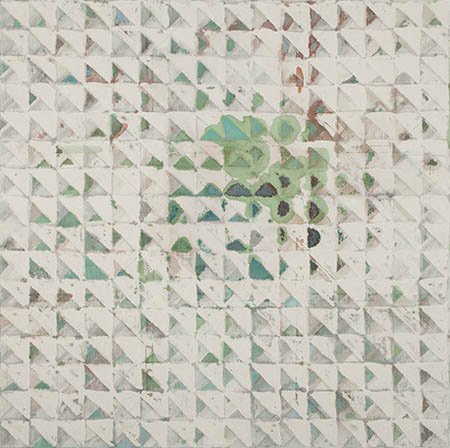
Continuing through October 13, 2015
How does the human brain store memories of texture and pattern? Imagine holding your favorite coffee mug, or folding an old family quilt. If you felt smooth porcelain at your fingertips and saw a flash of a patchwork pattern, you’ve discovered the ephemeral material Lynne Golob Gelfman captures on canvas in “Dyeing the Grid.” Gelfman’s acrylic abstractions are inspired by the artist’s collection of baskets and textile fragments from Africa and Latin America. Watery grids of geometric forms seem to ripple just above the surface, bringing forth synesthetic impressions of the warp and weft of these objects.
Treasures from the gallery’s extensive collection of Pre-Colombian textiles complete the experience. One moment, you’re lost in the undulating web of a Peruvian gauze headcloth, circa 900-1532 AD. A few steps over, Gelfman’s work masterfully mimics these tensile distortions using the simplest of forms on a vast white canvas. After you've taken a long look, ask a sales associate to pull a canvas off the wall. On the back you’ll find a dense expanse of pigment that exposes Gelfman’s spectacular secret: these are reverse paintings. The shimmering shapes on the front are ghosts of brushstrokes Gelfman applied on verso, sending pigments bleeding through the material. The uniform weave of a manufactured canvas reveals itself to be a modern corollary to the hand-woven textiles of centuries past. Gelfman surrenders herself to the unpredictability of a swiftly spreading drop of dye.
